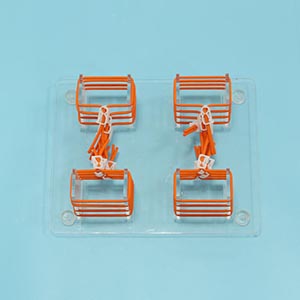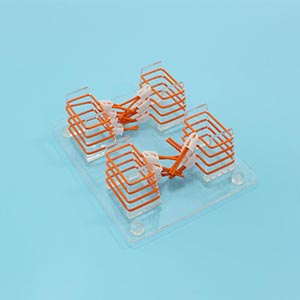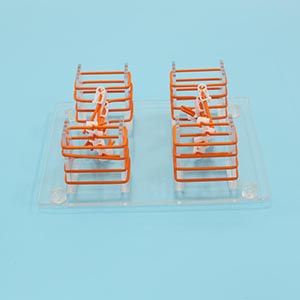19-12-2024
ADA MED SUPPLY LIMITED
To many ordinary people, the act of a surgeon skillfully tying knots during surgery may seem simple, but in reality, it is a basic skill that requires precision and experience to support it. In the surgical scene, tying is not only an action, but also a key link in repairing tissue, controlling bleeding and ensuring postoperative recovery of patients. How to simulate this complexity in training is particularly important for medical students or beginners who are learning.
The characteristics and advantages of superficial knotting model

Superficial knotting Skill Training model
The Superficial knotting Skills Training model is a tool specifically designed for surgical teaching and is typically made of highly simulated materials that mimic the feel and elasticity of real skin or tissue. The emergence of this model solves the problem of the lack of real operation opportunities for beginners.
- Restore tissue characteristics: The model can truly show the performance of human tissue during pulling, tension and recovery, and help students master the correct knotting force and technique.
Risk-free repetition: Unlike practicing directly on patients, using a model allows beginners to try again and again, and mistakes do not pose any risk.
- Progressively complex scenarios: From simple superficial skin knotting to more complex deep tissue or blood vessel stitching, the model can simulate a variety of surgical needs.
Case study: How can models help improve skills

Take the experience of a surgical student: when he first came into contact with suture, he often pulled the thread too tight and the knot was too deep, or the knot was unstable and the thread was loose. After practicing with the superficial knotting model for a month, his technique improved significantly, and the knotting speed and accuracy met clinical requirements. This progress makes him more confident in the follow-up real surgery, and also reduces the possible impact on patients due to technical inaccuracy.
The clinical significance of the model
Although the superficial knotting model cannot completely replace the anatomy and tissue characteristics of real patients, it provides a bridge for beginners from zero to proficiency. Through this model training, students can not only significantly improve their basic skills, but also reduce their psychological stress after entering the clinical environment.

For surgeons, knot tying is not only a technique, but also a manifestation of responsibility for the life of the patient. The superficial knotting skill model is an effective tool to help beginners take a solid first step. With repeated practice, they can master complex clinical procedures faster, leading to a better treatment experience for patients.